
Reg.
Trib. Milano n. 418 del 02.07.2007
Direttore responsabile: Elisabetta Brunella
|
 |
International Edition No. 99 - year 8 - 16 December 2013 |
 |
|
|
***
|
Dear readers,
 It is a great pleasure to present this new issue of the DGT Online Informer which, as well as the usual selection of news on digital cinema, also contains a more detailed account of screen sharing. It is a great pleasure to present this new issue of the DGT Online Informer which, as well as the usual selection of news on digital cinema, also contains a more detailed account of screen sharing.
This practice is already widespread in countries such as the United Kingdom, Finland, France, Germany (or, more recently, Spain), often dating back to before digital made it easier.
It brings a new opportunity to many markets, made possible by the use of digital technology. On the contrary, countries like Portugal or Italy are only just beginning to exploit this possibility for amplifying and diversifying their offer, which may instead provide the winning card, especially for small and medium-sized cinemas that do not have many screens available.
A brilliant example is the cinema in Thurso, which I quoted when opening the tenth edition of the DigiTraining Plus course: a small two-screen venue in the Scottish Highlands and the U.K's northernmost cinema which - after having been forced to close in 2009 - re-opened after a complete overhaul in 2012, placing all its bets on digital equipment - 4K and 3D projectors with satellite connection - thanks to which it is able to offer diversified programming. On Thursday 12 December in Thurso, it was possible to see the animated film Frozen (in both 2D and 3D) and Cloudy with a Chance of Meatballs 2 in the afternoon, whilst in the evening the second chapter in the saga The Hunger Games was screened, as well as Sunshine on Leith, presented at the Toronto Film Festival last September. The satellite also allows the cinema to project alternative content, such as opera or ballets, including a sell-out performance of The Nutcracker live from The Royal Opera House on the evening of the 12! Live digital enables access to events that would otherwise be out of reach and cost to spectators in such a remote area.
Placing their bets on these elements will be the trump card for the cinemas of the future and make it possible to confirm and enhance their role as venues for entertainment, social aggregation and cultural animation.
I take advantage of this occasion to wish you a good read, joyful festivities and a happy 2014.
Mike Vickers
Treasurer of MEDIA Salles
(Per leggere il testo in italiano cliccare qui) |
|
SAVE THE DATE!

MEDIA Salles at the Berlinale
Saturday 8 February 2014
In collaboration with AG Kino and CICAE

|
| |
|
|
Screen sharing: a well established practice for some, an innovation brought by digitization for others
by Elisabetta Brunella
|
The Italians call it "multi-programming", more or less the same as the French, but whilst this is a decidedly new practice in Italy, it is a long-standing phenomenon in France.
"With the arrival of digital," Christiane Reynaud, an independent exhibitor in the Île de France area, tells us, "showing several titles on the same screen has become far simpler. Today it is quite easy to screen the same film, dubbed for children and in its original version with subtitles for adolescents: we use a single DCP but choose the audio channel we need for each screening. It is obviously far less of a problem to alternate quite different titles in the same auditorium. In our 5-screen Fontainebleau site - L'Ermitage - open from 2 p.m. until midnight, we manage to offer as many as 15 titles a week."
In the cinemas run by Mrs Reynaud and her daughters some titles may be screened once only, as in the case of "Cinégoûter". Organised in Chartres, this is a Sunday slot for children and young people with an afternoon snack provided. The same applies for premières, a privilege that L'Ermitage, a cinema which keeps a careful eye on quality films and experimental works, often offers its customers.
Other titles are more frequently shown: when a widely popular film is released in Fontainebleau simultaneously with Paris, distributors demand at least three screenings a day, if not four, even if the title is mainly intended for children and teenagers and would not be particularly suitable for an evening screening.
The "art" of screen sharing also means getting audiences used to moving in a more complex programme than the sort normally adopted in Italian movie theatres: and this is why communication tools become essential. The Ermitage uses a blend of "old and new": a classical flyer with the week's programme, but alongside it the inevitable website and even an app that can be downloaded to smartphones.
Germany provides us with an excellent demonstration of the fact that screen sharing cannot be taken as a licence to reduce the number of projections of a film that "fails to please", but that considerable planning ability is required. In Germany the practice of "Schienenspiel", or programming by time slots, became widespread years ago, first and foremost in single-screen cinemas and then in those possessing up to three screens or, in other words, in those cinemas that would otherwise only have been able to offer a fraction of the films that are released over a twelve-month period. In this way they manage instead to programme as many as a couple of hundred or so of new titles. |
|
Screen sharing has been widespread for years in most European countries, independently of their size. Amongst its pioneers there are large territories, such as Germany and France, but also smaller markets like the Netherlands and Romania or Denmark and Finland, in Scandinavia. Digital projection technology not only facilitates the practice of screen sharing where it is already used, but also encourages its adoption in countries like Portugal or Italy. For those who are just starting out along this path, it may be useful to become acquainted with the clauses that regulate agreements between exhibitors and distributors on a pioneer market of screen sharing like the U.K.
Here the contracts that regard screen sharing quite rarely foresee the clause "all shows" and generally only for films with wide audience appeal and in their first and second week of release.
Frequently films suitable for children - like "Despicable Me" - are screened in cinemas with one or two screens, with a clause that stipulates "not the last show".
A title such as "Stitch" may be screened with the clause "evening shows from day 1", i.e. from its very first day of release this film, suitable for adult audiences, is only screened in the evenings.
The conditions are negotiated on hiring the film: the choice of the programming slots is thus not entirely at the exhibitor's discretion.
Nonetheless, in general from the third or fourth week of release onwards, exhibitors are free to present the distributor with proposals that may vary greatly from the original one and are based on different time slots: "just matinées" (morning or early afternoon shows), "just evening" or even at a specific time on a specific day (3 p.m. on Monday, 5.30 p.m. on Tuesday etc.).
Particular conditions may also regard children's films: for example, "matinées on Saturdays and Sundays" or "post-school show on weekdays", i.e. screening around 4 p.m. during the week, which is very common for cartoons, offered at the time children come out of school.
The KDM keys are provided by the distributor for each screen in the complex. The exhibitor chooses which screen to place the film on for his audiences at the times agreed with the distributor.
In the case of the live screening of alternative content, the projection of the film is guaranteed in any case on another screen, in general taking off a title that is already in its fourth week of release or more.
Elisabetta Brunella
|
|
|
This formula is the bread and butter of the art-house sector, partly because over 60% of cinemas belonging to the category's association have only one screen and have more or less always been characterized by the fact that their programming may even be monthly. It is no coincidence that they are known as "Programmkinos" and may screen 4 titles a day on a single screen. An illustrious example of this type of cinema is offered by the Kant in the Charlottenburg neighbourhood of Berlin. Opened in 1912 and with five screens, in this first week of December 2013 it has offered 9 titles ranging from Young and Beautiful to the cartoon movie Das kleine Gespenst", and including The Lunchbox and Two Mothers.
As emerged at Ciné, the yearly gathering of the Italian cinema community held at Riccione, screen sharing, which is also starting to appear in Italy, must be understood by exhibitors and distributors as an opportunity to be more precise in attracting the spectators interested in seeing a given film. Knowing the various audience typologies also means knowing their habits. "Who better than the exhibitor can know when to offer a certain film?" said Elise Brandt, a Finnish exhibitor, in her much appreciated video conference with her Italian colleagues' meeting at Ciné.
She went on, "Fortunately distributors here in Finland have confidence in our knowledge of the market and the demands of our audiences. Frankly I can't imagine a distributor signing a contract that imposes a single title on a screen for a whole week."
The experiences of those who have been practising screen sharing for years - even decades - thus show that trust between exhibitor and distributor is an essential requisite, as is good planning ability - in order to create varied and attractive weekly "programmes" for different audiences - together with a good audience communications strategy.
This text is an up-dated version of the article published in Italian in the "Giornale dello Spettacolo", no. 5, August-September 2013.
(Per leggere il testo in italiano cliccare qui)
(Extrait de l'article en français) |
|
WOMEN IN DIGITAL CINEMA
Christine Costello
Managing Director and Co-Founder More 2Screen Ltd (UK)
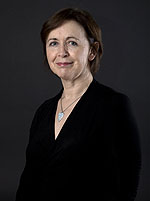 I've found myself being described as a pioneer of late but I didn't become one until mid-career. I had 20 years' experience of the commercial management of media companies (I reached board director level at a UK national media group, Express Newspapers, then moved to become commercial director of Scottish Media Group) when I was appointed CEO of the iconic UK cinema advertising company Pearl & Dean. This was in 2001 and at the very start of the UK's transition to digital cinema. Almost immediately I was made aware of the challenges that lay ahead: Warner Village Cinemas asked P&D to deliver all elements of the film and pre-show in a new digital format as 'proof of concept' - and this within a deadline of just four weeks. I've found myself being described as a pioneer of late but I didn't become one until mid-career. I had 20 years' experience of the commercial management of media companies (I reached board director level at a UK national media group, Express Newspapers, then moved to become commercial director of Scottish Media Group) when I was appointed CEO of the iconic UK cinema advertising company Pearl & Dean. This was in 2001 and at the very start of the UK's transition to digital cinema. Almost immediately I was made aware of the challenges that lay ahead: Warner Village Cinemas asked P&D to deliver all elements of the film and pre-show in a new digital format as 'proof of concept' - and this within a deadline of just four weeks.
We succeeded in doing so, thanks to all parties concerned pulling together. This not only gave me a glimpse of the exciting future of digital cinema that would fully unfold a full 10 years later. It also brought home to me the importance of collaboration within the film industry at every level. I had always loved the medium of cinema, from blockbusters to art house and all points in between. A BA degree in French and German meant that I also understood a little about the European market. And within five years at P&D this background had led to me being both VP of the UK's cinema advertising trade association, the CAA, but also of the worldwide advertising body SAWA.
The fact that I had built up good relationships with exhibitor clients, suppliers and distributors not just domestically but across many countries helped to give me the confidence to take the plunge and set up my own business, one in which I sought to develop the newly-emerging niche area of alternative content programming. I love content and working alongside its creators and could see the potential that digital offered for cinema owners to enhance their programming options and become true entertainment centres and social hubs for a broad spectrum of demographics and specialist audience groupings. So was born More2Screen.
The journey from its launch in 2006 through to today has been an exciting one for me personally and professionally. Because we were charting completely unknown territory, processes had to be made up as we went along - again with the close collaboration of industry partners. The result was some wonderfully uplifting moments and a few heart-lurching ones too. Seeing the pleasure that culture-hungry local audiences from Cornwall to Krakow take in experiencing first-class performances from Covent Garden, La Scala or St Petersburg's Mariinksy Theatre has been hugely satisfying and rewarding. Those moments when satellite signals have disappeared or subtitling machines have overheated and crashed have been very much less so.
From small acorns ... The alternative content sector is close to the point of representing 3 per cent of the global box office and I'm confident that this growth is only the initial phase of new digital programming's ongoing growth and development. To have been part of this first phase (OK, to have been a pioneer) has been a great privilege. According to IHS Screen Digest, M2S has been the leading UK cinema event provider for two years running now (2011 and '12) and I'm very proud of my team's achievements. I really believe this has been just the beginning though and I look forward to the next five years and all the amazing developments they will bring with real excitement.
(Per leggere il testo in italiano cliccare qui) |
ALL DIFFERENT ALL DIGITAL
by Elisabetta Brunella
This column hosts portraits of cinemas in Europe and the rest of the world which are quite different from one another but have in common the fact that they have all adopted digital projection.
Country |
Site |
Town |
Company |
Number of digital
projectors |
Projector |
Resolution |
Server |
No. of
3D screens |
Hungary
|
Art-Mozi
|
Miskolc
|
Cine-Mis
Non Profit
|
2
|
Christie
Barco
|
2K
|
Dolby |
1
|
Art-Mozi, Miskolc (HU)
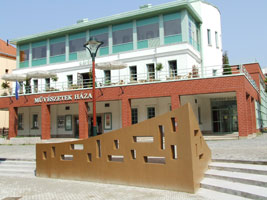 Let's be honest: if we have to think of a town projected towards the future, Miskolc is not the first that comes to mind. Let's be honest: if we have to think of a town projected towards the future, Miskolc is not the first that comes to mind.
Yet, this centre counting 170,000 inhabitants, in the north-east corner of Hungary, 50 km from the border with Slovakia and fewer than 200 km from the one with the Ukraine, has been cultivating its international dimension for a long time.
If, at the time of the Austro-Hungarian Empire when its inhabitants and those of Lombardy-Veneto were the subjects of the same sovereign, it exported iron products (readers from Trieste might check to see if the name Miskolc appears on the bollards - the bitte - in their port), today - in line with the trend towards dematerialization - the Magyar town, two hours across the puszta from Budapest, is the reference point for international cinema in Hungary.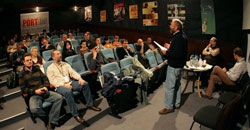
In the space of ten years and starting from nothing, Miskolc has succeeded in creating what is considered the most important international festival in Hungary, not only a meeting point for the Magyar industry and the international cinema community, but also - in many cases - the only opportunity for Hungarian audiences to see films on the big screen that will never be distributed internationally.
Even if they are spectacular works of undeniable artistic value.
Let one example stand for all: this year's "case": Nebraska by A. Payne.
The Cinefest is hosted by a small, two-screen cinema - the Béke (which means "Peace") 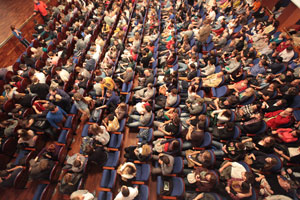 and the Urania - which operates at the Arts House, an initiative by the Municipality of Miskolc. and the Urania - which operates at the Arts House, an initiative by the Municipality of Miskolc.
As the 70 seats in one auditorium and 140 in the other are not sufficient for such an important event, the Cinefest also occupies the concert hall which, like the other two venues, is fitted for the occasion with a digital projector suitable for a large, 600-seat screen.
The person who has brought Miskolc onto the international cinema scene is Tibor Biro, Miskolc's "historical" exhibitor, who is devoted to quality cinema.
In Tibor a gentle trait and old-fashioned good manners combine with unyielding tenacity: this is the combination that has allowed art-house cinema to hold out in Miskolc, even when - almost simultaneously - two multiplexes came onto the scene, a product of the intoxicating swerve towards the market economy in the 'Nineties.
If one of them - the Hollywood multiplex - has closed and the premises have been turned into shops (the market is intoxicating but also merciless), thanks also to the town's cultural policy the offer of quality cinema, far f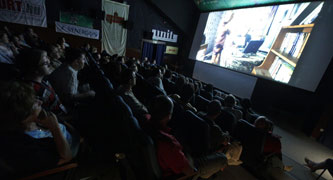 rom being satisfied with mere survival, has moved into the attack and the festival has become not only an occasion for great temporary visibility, but also an engine for the Béke's and the Urania's regular programming, at least 60% of which consists of domestic and European films. rom being satisfied with mere survival, has moved into the attack and the festival has become not only an occasion for great temporary visibility, but also an engine for the Béke's and the Urania's regular programming, at least 60% of which consists of domestic and European films.
Tibor and his passionate team, many of them volunteers, who make sure that Cinefest's services to the public and to professional players are up to the standards of the leading festivals, have shown that it is possible to be in touch with the local territory day by day, as well as projecting oneself towards the whole world.
"Act locally, think globally", a much-abused slogan, is a hard fact in Miskolc.
The Béke's and Urania's digital projectors were bought thanks to public financing, 25% of which from the Municipality and 75% from the State, by means of a scheme which - now in its third year - intends facilitating the digitalization of the approximately 30 arthouse screens operating in Hungary outside the Capital.
These theatres show films judged by a special national selection committee to be "arthouse".
(Per leggere il testo in italiano cliccare qui)
|
|
News on digitalization worldwide
by Francesca Mesiano
ITALY: regional support for digitalization*
TUSCANY
At the end of November the Regional Committee of Tuscany approved the publication of a call for applications for digitalization by the Region's cinemas. The Head of Culture, Councillor Cristina Scaletti, emphasized that, faced with the so-called "switch-off" of 35mm foreseen for 2014, this intervention is mainly necessary to guarantee the survival of small and medium-sized theatres.
The new call for applications - which will have available a total budget of 650,000 euros - is the third destined for the conversion of Tuscany's cinema screens. The two previous public calls have already contributed to the conversion of around 80% of the Region's movie theatres and with the third it is hoped that 100% digitalization will be attained.
MOLISE
The Molise Region has published a call for applications for the digitalization of cinemas, thanks to the Por Fers funds, in other words the European Regional Development Fund, with an overall allocation of one million euros.
The measure foresees non-repayable financing equal to: 50% of eligible costs (up to a maximum of 50,000 euros) for projects contributing to the digitalization of a single screen; 45% (for a maximum of 45,000 euros) for the digitalization of two or three screens; 40% (up to a maximum of 40,000 euros) for the conversion of four or more screens.
As well as the purchase of equipment for digital projection conforming to DCI specifications, amongst the eligible costs are the cost of adapting the projection booth and the purchase of equipment for satellite reception.
The deadline for the presentation of applications is 23 December 2013.
* This text updates the articles published in DGT Online Informer nos. 98, 91, 89, 88, 82
(Per leggere il testo in italiano cliccare qui)
ITALY: huge success for Pompeii in Italian cinemas
The documentary on ancient Pompeii produced by the British Museum and distributed in Italian cinemas by Microcinema in collaboration with More2Screen (see DGT online informer n. 98) has been an enormous success with audiences, so much so that - following the screenings on 25 and 26 November - many cinemas decided to screen it again in the days following.
In the last weekend of November, "Life and death in Pompeii and Herculaneum" earned a total of 3,966 euros per screen, second only to "Hunger Games - Catching Fire".
This result, all the more surprising considering that no evening screenings were scheduled, ensured the documentary's inclusion in regular cinema programmes, starting on 5 December.
(Per leggere il testo in italiano cliccare qui)
ITALY: Opening Night at the Scala, live in 141 cinemas
As every year, 7 December, the feast day of Saint Ambrose, patron saint of Milan, opens the Teatro alla Scala's opera season.
For the inauguration Giuseppe Verdi's "La Traviata" was staged, directed by Maestro Daniele Gatti.
Once again this year, thanks to digital technology and to the collaboration of Microcinema, Italian audiences had the option of watching the most important event in the Milan opera season live at the cinema in 141 theatres throughout the country (for a complete list, see the Microcinema website http://www.grandestagionelive.it/le-sale.html). The screening was a great success with audiences: 30,000 spectators for a total box-office of 250,000 euros.
Outside Italy, thanks to the collaboration of RAI and Rising Alternative, the Opening Night at the Scala was broadcast live in cinemas in 15 European countries (Austria, the Czech Republic, Denmark, Ireland, Latvia, Lithuania, Malta, Norway, Poland, Romania, Russia, Slovakia, Spain, Switzerland and the United Kingdom), as well as in USA and Canada.
(Per leggere il testo in italiano cliccare qui)
ITALY: performances by the Royal Opera House in cinemas
Thanks to collaboration between QMI and Arts Alliance Media, operas and ballets from Royal Opera House are arriving in Italian cinemas.
The programme - inaugurated last September with "Turandot" - foresees two live performances in the month of December: "The Nutcracker Suite" (in which the prince is played by Federico Bonelli from Piedmont) on the 12 and "Parsifal" on the18, directed by Antonio Pappano.
The season continues with "Giselle" (27 January), "Don GiovannI" (12 February), "Sleeping Beauty" (19 March), "A Winter's Tale" (28 April) and "Manon Lescaut" (24 June).
For further information www.rohalcinema.it
(Per leggere il testo in italiano cliccare qui) |
|
GERMANY: Berlin Zoo Palast reopens with avant-garde technology
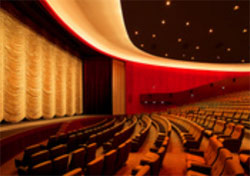 After three years of renovation - and an investment of 5.5 million euros - the historical Berlin cinema Zoo Palast, in Charlottenburg, the main venue of the Berlinale from 1957 to 1999, re-opened its doors to the public on 27 November this year. After three years of renovation - and an investment of 5.5 million euros - the historical Berlin cinema Zoo Palast, in Charlottenburg, the main venue of the Berlinale from 1957 to 1999, re-opened its doors to the public on 27 November this year.
Whilst restoration has kept to the original colours of the 'Fifties, the cinema has taken on new life with the installation of avant-garde NEC and Christie digital projectors in all seven of its auditoriums. Four of them are also equipped for 3D.
The largest auditorium in the Zoo Palast - an impressive 850 seats - is fitted with a 4K digital projector and 3D Dolby Atmos audio system.
Thanks to an agreement with Arts Alliance Media, all the auditoriums are also provided with the TMS Screenwriter system.
(Per leggere il testo in italiano cliccare qui)
|
|
TURKEY: Cinema PINK signs an agreement with dcinex on the digitalization of its screens
Cinema PINK, the Turkish exhibition company with 11 complexes throughout the Country, has signed an agreement with the integrator dcinex for the conversion of 113 screens using Sony 4K and 3D technology.
The process of installing the new projectors has already begun, starting with two brand-new complexes - housing respectively 6 and 8 screens - opened between November and December.
It is forecast that all the installations will be completed by the end of the first quarter of 2014.
(Per leggere il testo in italiano cliccare qui) |
|
SOUTH AFRICA: Nu Metro installs digital projectors on all its screens
Thanks to an agreement on the VPF model with Arts Alliance Media, Nu Metro, one of the leading exhibitor chains in the continent of Africa, has arranged for the digitalization of all 16 of its cinemas - a total of 149 screens - located in South Africa.
The conversion process is already taking place - with the installation of Barco projectors - and forecasts are that the network will be fully digital by the end of the year.
Some cinemas in Johannesburg, Cape Town and Durban will also be equipped with Auro, the innovative 3D audio system. These are the very first installations of Auro in the whole of Africa.
(Per leggere il testo in italiano cliccare qui)
|
|
| |
|

 I've found myself being described as a pioneer of late but I didn't become one until mid-career. I had 20 years' experience of the commercial management of media companies (I reached board director level at a UK national media group, Express Newspapers, then moved to become commercial director of Scottish Media Group) when I was appointed CEO of the iconic UK cinema advertising company Pearl & Dean. This was in 2001 and at the very start of the UK's transition to digital cinema. Almost immediately I was made aware of the challenges that lay ahead: Warner Village Cinemas asked P&D to deliver all elements of the film and pre-show in a new digital format as 'proof of concept' - and this within a deadline of just four weeks.
I've found myself being described as a pioneer of late but I didn't become one until mid-career. I had 20 years' experience of the commercial management of media companies (I reached board director level at a UK national media group, Express Newspapers, then moved to become commercial director of Scottish Media Group) when I was appointed CEO of the iconic UK cinema advertising company Pearl & Dean. This was in 2001 and at the very start of the UK's transition to digital cinema. Almost immediately I was made aware of the challenges that lay ahead: Warner Village Cinemas asked P&D to deliver all elements of the film and pre-show in a new digital format as 'proof of concept' - and this within a deadline of just four weeks.
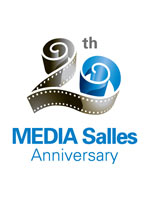
 It is a great pleasure to present this new issue of the DGT Online Informer which, as well as the usual selection of news on digital cinema, also contains a more detailed account of screen sharing.
It is a great pleasure to present this new issue of the DGT Online Informer which, as well as the usual selection of news on digital cinema, also contains a more detailed account of screen sharing.


 Let's be honest: if we have to think of a town projected towards the future, Miskolc is not the first that comes to mind.
Let's be honest: if we have to think of a town projected towards the future, Miskolc is not the first that comes to mind.
 and the Urania - which operates at the Arts House, an initiative by the Municipality of Miskolc.
and the Urania - which operates at the Arts House, an initiative by the Municipality of Miskolc. rom being satisfied with mere survival, has moved into the attack and the festival has become not only an occasion for great temporary visibility, but also an engine for the Béke's and the Urania's regular programming, at least 60% of which consists of domestic and European films.
rom being satisfied with mere survival, has moved into the attack and the festival has become not only an occasion for great temporary visibility, but also an engine for the Béke's and the Urania's regular programming, at least 60% of which consists of domestic and European films.  After three years of renovation - and an investment of 5.5 million euros - the historical Berlin cinema Zoo Palast, in Charlottenburg, the main venue of the Berlinale from 1957 to 1999, re-opened its doors to the public on 27 November this year.
After three years of renovation - and an investment of 5.5 million euros - the historical Berlin cinema Zoo Palast, in Charlottenburg, the main venue of the Berlinale from 1957 to 1999, re-opened its doors to the public on 27 November this year.